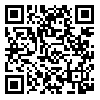Volume 1, Issue 4 (12-2017)
EBHPME 2017, 1(4): 222-230 |
Back to browse issues page
Download citation:
BibTeX | RIS | EndNote | Medlars | ProCite | Reference Manager | RefWorks
Send citation to:



BibTeX | RIS | EndNote | Medlars | ProCite | Reference Manager | RefWorks
Send citation to:
Lotfi N, Nouraei Motlagh S, Hadian M, Ghasempour S. Estimation of Iran’s Life Insurance Demand Function using Panel Data Method from 2006 to 2014. EBHPME 2017; 1 (4) :222-230
URL: http://jebhpme.ssu.ac.ir/article-1-112-en.html
URL: http://jebhpme.ssu.ac.ir/article-1-112-en.html
Department of Health Economics, School of Health Management and Information Sciences, Iran University of Medical Sciences, Tehran, Iran
Abstract: (3687 Views)
Background: Insurance industry is recognized as a major economic entity. Development of insurance, and particularly life insurance, is among the necessities of industrial societies as this plays a substantial role in reinforcement of the society’s economic power and, thus, establishes security and confidence. Aimed at analyzing the economic-social factors affecting insurance demand, the present study deals with estimation of life insurance demand function using panel data from 2006 up to 2014 in Iran.
Methods: The present research is a descriptive-analytical study of the retrospective cohort applied type. Information registered in Iran’s Statistics Center encompassing the interval from 2006 to 2014 was analyzed. Benefitting from economic evaluation mechanism and macro-scale economic and social variables affecting life insurance demand were investigated in 30 provinces of Iran. Finally, the country’s demand function of life insurance was estimated using Stata12 and Eviewes8 software packages with panel data method.
Results: Life expectancy rate has the largest impact on life insurance demand among the variables analyzed. In addition, urban settlement rate leaves the smallest effect on life insurance demand.
Conclusion: Results of the study indicate that increase and rise of variables such as life expectancy rate, dependency rate, urban settlement rate, literacy rate, likelihood of family head’s death, population, and average net annual expenditures of urban family lead to increased tendency of individuals to life insurance. Furthermore, increase of other parameters like inflation rate and interest rate result in reduction of people’s tendency toward life insurance.
Methods: The present research is a descriptive-analytical study of the retrospective cohort applied type. Information registered in Iran’s Statistics Center encompassing the interval from 2006 to 2014 was analyzed. Benefitting from economic evaluation mechanism and macro-scale economic and social variables affecting life insurance demand were investigated in 30 provinces of Iran. Finally, the country’s demand function of life insurance was estimated using Stata12 and Eviewes8 software packages with panel data method.
Results: Life expectancy rate has the largest impact on life insurance demand among the variables analyzed. In addition, urban settlement rate leaves the smallest effect on life insurance demand.
Conclusion: Results of the study indicate that increase and rise of variables such as life expectancy rate, dependency rate, urban settlement rate, literacy rate, likelihood of family head’s death, population, and average net annual expenditures of urban family lead to increased tendency of individuals to life insurance. Furthermore, increase of other parameters like inflation rate and interest rate result in reduction of people’s tendency toward life insurance.
Type of Study: Original article |
Subject:
Health Economics
Received: 2017/07/27 | Accepted: 2017/12/19 | Published: 2018/05/15
Received: 2017/07/27 | Accepted: 2017/12/19 | Published: 2018/05/15
| Rights and permissions | |
 |
This work is licensed under a Creative Commons Attribution-NonCommercial 4.0 International License. |





